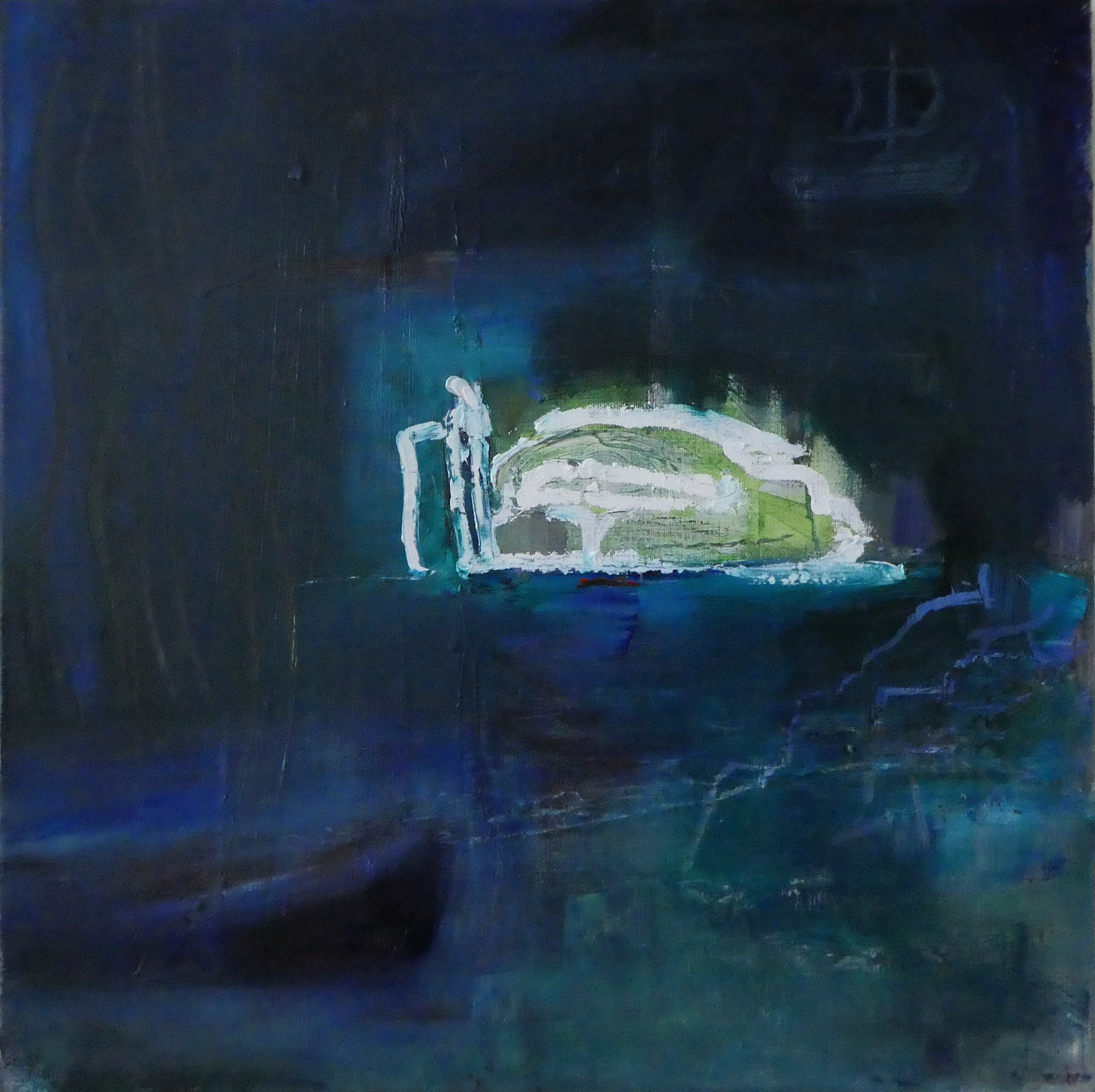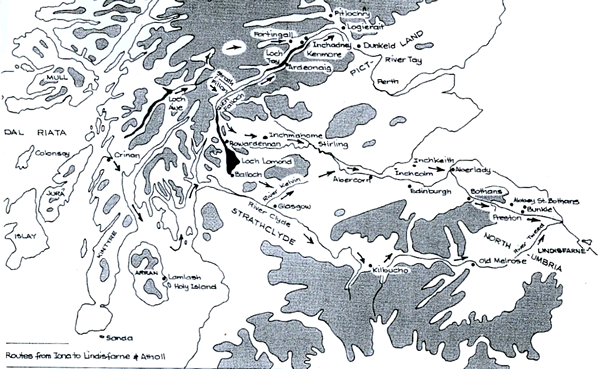Above: Island. Acrylic and oil on 14×10″ wood. Rose Strang 2024
This is one of today’s paintings as part of the Crusader’s tomb series I’m working on this year. (previous posts here – post 1
I imagined our crusader, David de Lindsey visualising his home, as he lay in bed being looked after by Carmelite monks in the Middle East . He might dream of the landscape he’d pass on his voyage back to Scotland and Luffness, so the painting above is a sort of Bass Rock of the mind. It’s an island anyone entering the Firth of Forth would see as they sailed past.
I’m working on this series intuitively, allowing imagery to surface as it wishes. Here are two more paintings in progress from today’s session in the studio –
- ‘Abyss’. Oil on 20×20″ canvas. Rose Strang 2024
- ‘Seal’. Oil on 10×8.5″ wood. Rose Strang 2024
I’m exploring the traumatic side of de Lindsey’s experience, the painting above shows a quickly sketched copy of the danse macabre on red background from a Medieval painting. Underneath is the faint suggestion of a horse – a romanticised image associated with crusaders. The colour of the red oil paint also makes me think of a wax seal – a promise or signed contract maybe.
I’m using these images I suppose to explore the way we’re drawn to causes through powerful imagery. We’re such visual people and I wonder if those with visual impairments are less susceptible to (for example) political campaigns since they can’t see slogans and imagery!
At the same time the imagery I’m choosing is a way to say something about the idea of faith and the spirit, because we do share archetypal images in imagination, so the image above the red painting directly above might suggest spirit, and it echoes yesterday’s painting. Return II

More paintings soon …
















